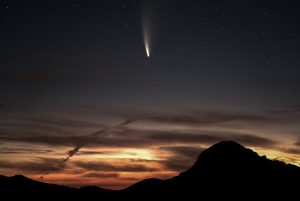Our planet Earth has gone through many changes through the millions of years of its existence, and the Earth we know today is very different from then. The landscape of Earth’s surface has at different times been extremely cold, crawling with life, and a desolate desert. Some changes to Earth happen slowly. Small temperature changes and chemical compositions have altered the Earth’s landscape. These changes happen so slowly that their marks can be difficult to see. Other times however, the Earth is scarred from dramatic changes. Dramatic changes can spell catastrophe for all life forms and reset the Earth.
Such rapid transformation or destruction leave behind scars that can still be seen to this day. One of the most catastrophic and sudden changes is marked by the gigantic Chicxulub Crater (pronounced chix-cooloob).

The most common form of scars from Earth’s sudden changes either come from deep within the Earth, like earthquakes and volcanoes, or they are entirely alien. Earth, like all other planets, is moving through space and can sometimes collide with other bodies flying through space. That is exactly how the Chicxulub Crater was formed.
A large meteorite from outer space made landfall on the Earth’s surface around 66 million years ago. The asteroid landed in the ocean, known as the Yucatan peninsula and modern day Mexico. While meteors and meteorites are a common occurrence for Earth (nearly 100 tons of space debris enter Earth’s atmosphere every day), the meteorite that created the Chicxulub Crater only comes every million years or so. Most of the meteors that come into Earth’s atmosphere are small, like a grain of sand. Because they are so small and moving so very quickly, when they come in contact with the atmosphere, an immense amount of friction disintegrates the meteor before it can reach the ground.
Sometimes these meteors give off light as they burn and are commonly known as shooting stars. It is important to note that comets are very different from meteorites and shooting stars. Comets are quite large and very far from Earth. The streaks of light come from the boiling of the comet’s surface as the Sun heats it up.
What makes this crater and meteorite different from most others is that it is accredited for killing all of the dinosaurs of the Cretaceous period. There has been much controversy as to the legitimacy of this claim. Some scientists claimed that volcanism and other, slow moving, changes really

killed the dinosaurs and the meteorite merely sped up the process. However, as of the late 2000’s there is a consensus that it was in fact this impact that spelled doom for the spinosaurus and megalodon.
While the extinction of the dinosaurs is tragic, the event that created the Chicxulub Crater set the stage for the continued development of the Earth’s surface to become the cradle of life that it is today.
There is much to learn studying the crater at the bottom of the ocean. The more we know about our planet’s distant past, the more that we can learn about our potential future. The Earth is constantly changing and over time we have become more aware as to how it changes and what we can do to keep the benefits and minimize the detriments.

